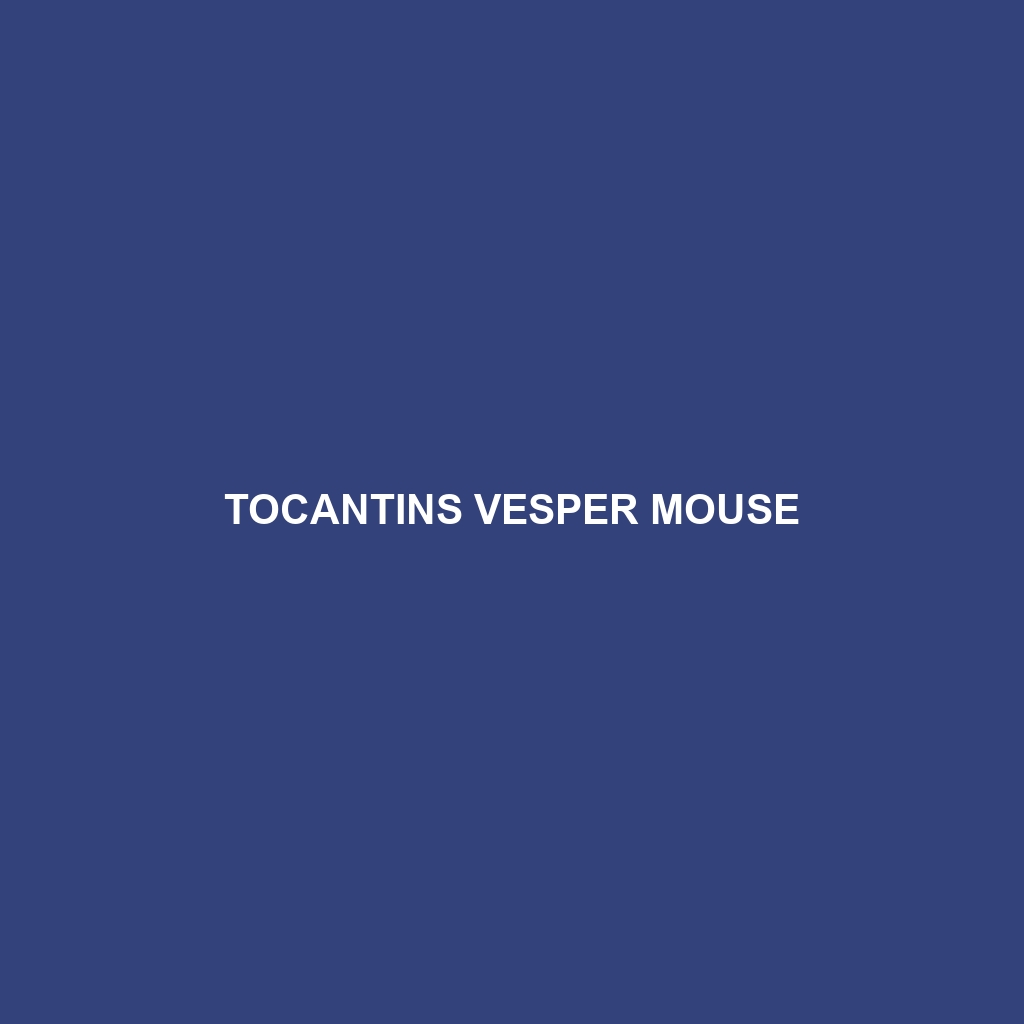Tocantins Vesper Mouse – Species Description
Common Name: Tocantins Vesper Mouse
Scientific Name: Calomys tocantinensis
Habitat
The Tocantins Vesper Mouse is primarily found in the central region of Brazil, particularly in the Tocantins state. This species thrives in a variety of ecological zones, including grasslands, scrublands, and areas bordering forested regions. Its preference for environments with thick vegetation provides ample shelter and opportunities for foraging.
Physical Characteristics
The Tocantins Vesper Mouse is characterized by its medium size, typically measuring around 70 to 120 mm in body length, excluding the tail. The fur displays a distinctive color pattern, with a soft brown or grayish-brown coat, complemented by lighter underparts. Notable features include large, rounded ears and long, slender tails that can be nearly as long as the body itself, aiding in balance as it navigates through its habitat.
Behavior
This species is primarily nocturnal, displaying most of its activity during the night. Tocantins Vesper Mice are known for their social behavior, often forming small colonies. They communicate using a range of vocalizations and are skilled climbers, often seen foraging in low shrubs and trees. Their agility and keen sense of smell also play a crucial role in their survival, aiding in predator evasion.
Diet
The Tocantins Vesper Mouse is an omnivore, primarily feeding on seeds, fruits, and vegetation. Insects also supplement their diet, particularly during breeding seasons when nutritional demands increase. This varied diet not only supports their longevity but also plays a significant role in seed dispersal within their ecosystem, helping maintain plant diversity.
Reproduction
This species exhibits a relatively high reproductive rate, with breeding occurring year-round, peaking during the rainy season when food is abundant. Females typically give birth to litters of 2 to 6 offspring after a gestation period of about 25 days. Young mice are weaned at around three weeks, quickly learning to forage independently, further contributing to population growth.
Conservation Status
Currently, the Tocantins Vesper Mouse is classified as vulnerable due to habitat loss from agricultural expansion and deforestation. Conservation efforts are essential to preserve its natural habitats and maintain healthy population levels.
Interesting Facts
One fascinating aspect of the Tocantins Vesper Mouse is its ability to adapt to varied environments, showcasing great resilience. Furthermore, it plays a pivotal role in its ecosystem by supporting plant growth through seed dispersal, highlighting the intricate connections within its habitat.
Role in Ecosystem
The Tocantins Vesper Mouse is an integral part of its ecosystem, contributing to local biodiversity. As both a prey species for various predators and a seed disperser, it helps maintain ecological balance. The health of its populations can serve as an indicator of ecosystem health, making its conservation imperative.
